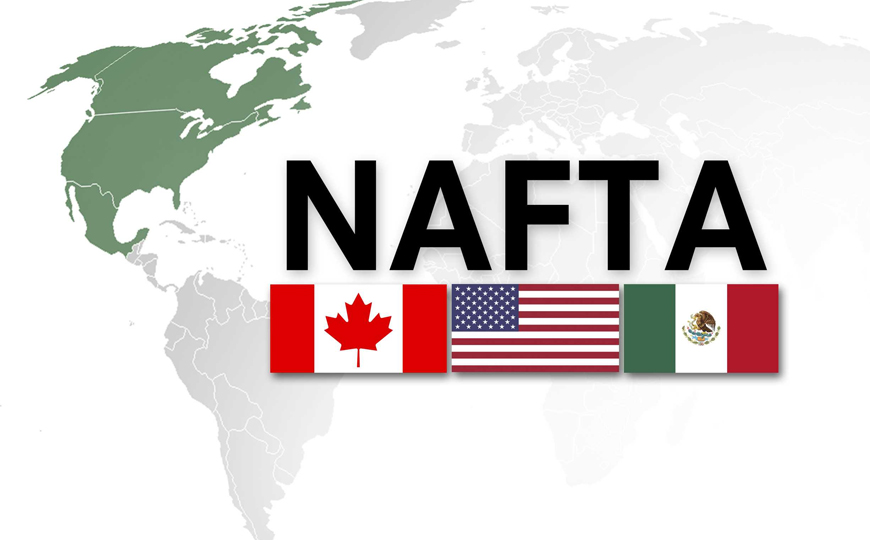As we have pointed out in the latest bulletins, the three NAFTA member countries have different objectives in the renegotiation of this trade agreement, however, these differences become more evident in the third round of negotiations as the USA will try to achieve one of the main objectives on its agenda: the elimination of Mexico's trade surplus, mainly in the manufacturing sector and particularly in the automotive sector. This aims to achieve this by changing the regional content of the automotive sector that is currently around 65%. Recently, the US Department of Commerce (USDOC) published an analysis that reveals the fall in value added of US content in imports from the NAFTA region from 26% in 1995 to 16% in 2011. The analysis also addresses the concern the increase in the incorporation of non-originating materials from China into NAFTA imports (particularly in the integration of Mexican exports with Chinese components) ranging from 0.3% to 6%, but not only that because also accused that in general non-NAFTA-based inputs have increased from 14% to 27%. Then, in the face of this situation, the US wants to increase the content of goods produced in the NAFTA region with a higher percentage of US inputs, which results in a crude negotiation of the rules of origin of the treaty. Difficult to achieve because of it depend many jobs in the region.
It should by now be abundantly clear, to even the most optimistic observer, that the NAFTA renegotiation process isn’t going anywhere and that there are probably now only three possible outcomes – all of them equally distasteful:
Scenario 1: Donald Trump has succeeded, at the last moment, in beating the governments of Mexico and Canada into submission on substantially all important points – getting a NAFTA 2.0 deal by early 2018. In the U.S., under fast track authority, it’s now just the first step in a long and complicated journey: First, Trump has to give Congress 90 days advance notice before he can even sign an amended NAFTA. Congress can, and will, express its own views on the deal during this notification period. After signing it, Trump has to submit the full text plus a draft of implementing legislation to Congress. But that can’t happen until the U.S. International Trade Commission completes its own independent assessment which can take a maximum of 105 days. All told, then, it will probably take 225 days before the draft bill is even sent to Congress, whereupon the Senate and the House of Representatives each have 90 session days to consider it and either approve or reject the package. (Session Days are counted when each house is sitting – not calendar days) There is no definitive requirement as to when each 90 day period must begin. Under this scenario, a vote cannot realistically be scheduled before the U.S. Congress adjourns for midterm elections in 2018 – guaranteeing that NAFTA 2.0 will be a spectacular political hot potato in our elections in July as in the U.S. midterms in November.
Scenario 2: The negotiations collapse and Trump notifies Mexico and Canada by diplomatic letter under Article 2205 of NAFTA that the U.S. is withdrawing from the treaty. Pulling the NAFTA plug in this manner would raise a huge outcry in all three partner states and kick-start a bitter constitutional wrangle between Trump and the U.S. Congress over who has pre-eminence over international trade. There is, at present, no consensus on whether the President can unilaterally withdraw from trade agreements without congressional approval and leading constitutional scholars are convinced that he cannot. At any rate, this latent constitutional crisis will slowly wind its way through the federal court system and may not be decided by the U.S. Supreme Court until ten years from now! During all of this, of course, the original NAFTA will remain in full force and effect…
Scenario 3: The negotiations collapse and all further rounds are suspended. While Trump now blusters, tweets and points fingers, he does not pull the withdrawal trigger and trilateral trade goes on as usual. The downside of this scenario, however, is that Trump could use his considerable arsenal of non-tariff obstructions to free trade – from phyto-sanitary complaints to dumping accusations to trumped-up (no pun intended) national security concerns etc., etc….
All in all, Trump has provoked a situation which is equally unpalatable to all three countries.




